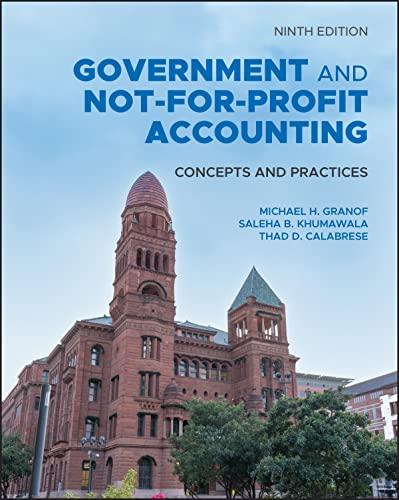Question
Fragrance Pty Ltd has two divisions: the Cologne Division and the Bottle Division. The company is decentralised and each division is evaluated as a profit
Fragrance Pty Ltd has two divisions: the Cologne Division and the Bottle Division. The company is decentralised and each division is evaluated as a profit centre. The Bottle Division produces bottles that can be used by the Cologne Division. The Bottle Division's variable manufacturing cost per unit is $2.00 and shipping costs are $0.10 per unit. The Bottle Division's external sales price is $3.00 per unit. No shipping costs are incurred on sales to the Cologne Division. The Cologne Division can purchase similar bottles in the external market for $2.50. The Bottle Division has sufficient capacity to meet all external market demands in addition to meeting the demands of the Cologne Division. Using the general rule, the minimum transfer price from the Bottling Division to the Cologne Division would be:
| a. | $2.00. | |
| b. | $2.10. | |
| c. | $2.50. | |
| d. | $2.90. | |
| e. | $3.00. |
Barrister Company has two divisions: A and Z. The A Division produces a single product that can be sold to outside customers or to the Z Division. Sales forecasts, production statistics and costs for both divisions for 20x2 are shown below: A Division:
| Outside customer demand | 50,000 units | |
| Z Division demand | 35,000 units | |
| Market price per unit | $10 | |
| Variable manufacturing cost per unit | $6 | |
| Variable selling costs per unit | $1 | * |
| Fixed manufacturing costs | $120,000 | |
| Annual capacity | 80,000 units |
Z Division:
| Customer demand | 35,000 units |
| Market price per unit | $50 |
| Variable manufacturing cost per unit (not including any transfer from A) | $20 |
| Variable selling costs per unit | $5 |
| Fixed manufacturing costs | $350,000 |
| Annual capacity | 35,000 units |
* When A Division sells to Z Division no variable selling costs are incurred by A Division. Calculate the minimum per unit transfer price that A Division should charge Z Division in 20x2, using the general transfer pricing formula.
| a. | $10.00. | |
| b. | $8.50. | |
| c. | $7.26. | |
| d. | $6.43. | |
| e. | $6.00. |
Step by Step Solution
There are 3 Steps involved in it
Step: 1

Get Instant Access to Expert-Tailored Solutions
See step-by-step solutions with expert insights and AI powered tools for academic success
Step: 2

Step: 3

Ace Your Homework with AI
Get the answers you need in no time with our AI-driven, step-by-step assistance
Get Started


